Year: 2024 | 2023 | 2022 | 2021 | 2020 | 2019 | 2018 | 2017 | 2016 | 2015 | 2014
2024
- Aristóxeno de Tarento, Os Elementos de Harmonia (Aristoxenus of Tarentum, The Elements of Harmonics) [First Translation into Portuguese]

Nataly Ianicelli Cruzeiro
June, 2024
Odysseus: São PauloAncient Philosophy and Science, Greek Language and Literature | Book
The Elements of Harmonics by Aristoxenus of Tarentum, a student of Aristotle, is one of antiquity’s earliest well-preserved musical writings. In this treatise, Aristoxenus establishes Harmonics as a purely musical science that depends on perception and thought (dianoia). His project is revolutionary in that it challenges the so-called “Pythagorean tradition” and counters the views of Plato and Aristotle, arguing that harmonics, qua the study of melodies, is not subordinate to the mathematical sciences. My book thematizes Aristoxenus’ tense relationship with the mathematical tradition and presents the first Portuguese translation of his treatise, accompanied by exegetical commentary.
- ‘Which the Greeks Call…’: The Rhetoric of Code-Switching in De architectura 3.1
 Marcie Persyn
Marcie Persyn
May, 2024
Ramus, vol. 52, iss. 2
Cambridge University PressGreek Language and Literature, Latin Language and Literature | Journal Article
In the first chapter of De architectura book 3, Vitruvius famously expounds upon the theory of proportionality, ultimately crafting the analogy of the human body as a composition of ideal ratios. In this exposition, the architect repeatedly makes use of technical jargon, implementing terms found nowhere else within the Latin literary corpus. Amidst this series of rare Latin vocabulary, however, Vitruvius also includes a striking twenty-seven Greek borrowings—of which twelve are novel terms not found in the corpus before this passage, and seven are terms not found again. While many of these Grecisms are explicated by Vitruvius through the use of subordinate clauses or apposition, the very existence of Latin equivalents and the resultant redundancy of terms renders Vitruvius’ linguistic vacillation strictly unnecessary and rather obfuscating in effect. After all, why borrow a term that requires definition when a corollary already exists within one's primary, ‘matrix’ language? Likewise, once one has committed to adopting a second language of technical vocabulary, why bother translating? Other, similar lexical borrowings are evident throughout De architectura, yet the opening of book 3 offers a unique opportunity to analyze Vitruvius’ method of code-switching in close detail, revealing how the author uses the technique to draw attention both to the technicality of his art and to the Greek tradition evoked by these words.
- Affective Entanglements: Shifting Attitudes Toward the Ancient Greek Body
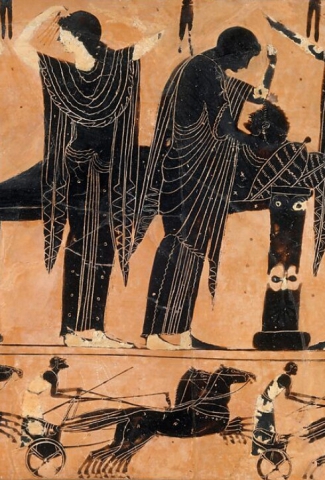 Alex-Jaden Peart
Alex-Jaden Peart
April, 2024
Undergraduate Thesis, University of Pittsburgh. (Unpublished)Ancient History and Society, Ancient Philosophy and Science, Greek Language and Literature, Religion, Myth and Ritual | Scholarship
This work is rooted in my understanding that the ancient Greek world’s conceptions of Nature and natures-in-the-world are fundamentally affective and entangled. In the chapter entitled “Somatophobia: Anxieties of Subjection,” I study the Homeric uses of the word sōma, arguing that, as opposed to the dominant belief that it purely means “corpse,” it displays a fear of becoming objected to culturally inadmissible forms of subjection. Moving away from the reading of sōma as simply a matter of death, I make the claim that sōma’s inertness is a pivotal notion in the (re)casting of it as irrecuperable for social life. I contend that sōma may be understood as a material form that has been stripped of its instrumentality (i.e., its ability to be an active agent) and, thereafter, exposed to improper and culturally inadmissible forms of subjection and consumption.
Concluding that this sōma is an epistemic and conceptual object, in chapter two, “Holistic Networks of Care, Perception, and Community,” I argue that this sōma is the form that comes to be articulated as the subject of anthropologically driven care that emerges out of the peri phúseōs historía (“inquiry into nature”) tradition and the emergence of medicine as a tékhnē (“technical craft”) with significant resonances along philosophical and enviro-medical discourses. I understand this body, one deeply porous and liable to “affection” (páthē), to be a response particularly to the latter, and I postulate that the innovatively ethnographic tinge of the Hippocratic Corpus’ On Airs, Waters, Places (c. fifth-century B.C.E.) reveals the exegetical nature of medicine as implicit in the explication and perpetuation of communities that share nomoí (“customs”), a particular look, a glôssa (“language”), and geographic space. Nonetheless, this type of deeply shared community building abounds, too, in the creation of firm boundaries.
I attend to this dichotomy in the third chapter, “Sunalgeîn: Community, Kátharsis, and Exclusion,” wherein I study the unique ability of tragedy, in its provocations of éleos (“pity”) and phóbos (“fear”), to both extend and withhold ties of empathy within and beyond a proscribed group, appealing to Aeschylus’ Suppliants (c. 463 B.C.E.) as my case-study.
- A Learned Dog: Roman Elegy and the Epitaph for Margarita
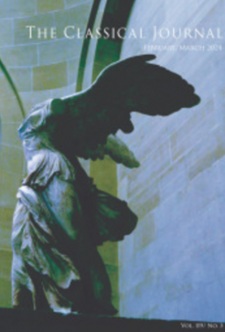 Grace Funsten
Grace Funsten
March, 2024
The Classical Journal, vol. 119, no. 3
Johns Hopkins University Press: BaltimoreAncient History and Society, Latin Language and Literature | Journal Article
The epitaph for Margarita (CIL 6.29896) consists of six elegiac couplets in Latin engraved on a small marble plaque in commemoration of a domestic dog. It was discovered in Rome and likely made in the second century CE. In this paper I examine its allusions to Augustan elegy and verse epitaphs for humans, arguing that it humorously applies eroticizing and literary language to a dog. I then consider Margarita’s status as an import from Gaul, arguing that the epitaph fits into a broader tendency of Augustan elegy to use foreign luxuries to eroticize and naturalize Roman imperialism.
2023
- Stepmothers: The Enemy Within. An exploration of the hostile stepmothers in Euripides
 Karyn Bartosic
Karyn Bartosic
December, 2023
Senior Honors ThesisAncient History and Society, Greek Language and Literature | Scholarship
In this paper, I investigate the historical stepmother in the context of marriage, step-motherhood, citizenship, and inheritance law, and outline the “hostile stepmother” stereotype, drawing on Watson’s Ancient Stepmothers, as well as the “specter of the stepmother”. I then explore examples in Euripides, connecting the historical context to the literary representations of the hostile stepmother. Theatre is a way for both playwright and audience to grapple with the political issues of the day. Euripides’ gives us examples of the specter of the stepmother in Alcestis and Medea, hostile stepmothers in Andromache and Phrixus, the lustful stepmother in Hippolytus, and a combination in Ion, where mistaken identity leads Creusa to take on the role of the hostile stepmother towards her own child. These plays also feature nothoi and themes of otherness and foreignness in conjunction with the stepmothers. I conclude by connecting these literary phenomena to issues of citizenship and identity in classical Athens.
- May the Thief Become as Liquid as Water: Persuasion and Power in a Curse Tablet from Roman Bath
 Sarah Brucia Breitenfeld
Sarah Brucia Breitenfeld
October, 2023
Brill Studies in Greek and Roman Epigraphy, vol. 20 (Inscriptions and the Epigraphic Habit)
Brill: Leiden, The NetherlandsAncient History and Society, Latin Language and Literature | Book Chapter
Although the epigraphic habit has principally been used to examine public, monumental and stone-cut inscriptions, the curse tablets of Roman Aquae Sulis speak to the impact of individual voices on our surviving inscriptional evidence. In this chapter, I examine the epigraphic choices of the petitioner who composed tablet RIB 154 and recorded the desire that the victim “become as liquid as water” (sic liquat comodo aqua). I aim to show how the petitioner may have intended this persuasive analogy to operate. First, I address the significance of water in Aquae Sulis. Second, I perform a close reading of RIB 154’s text. Third, I track the creation and deposition of this pewter tablet into the sacred spring. Finally, I reflect on how RIB 154’s site, text and object function together to clarify the meaning of the phrase sic liquat comodo aqua. I argue that by inscribing these words and throwing the tablet into the spring of Sulis Minerva, the petitioner of RIB 154 articulated a desire to melt, drown or bleed the curse’s victims.
- Divina Mens: Imperial Propaganda in De architectura 6.1
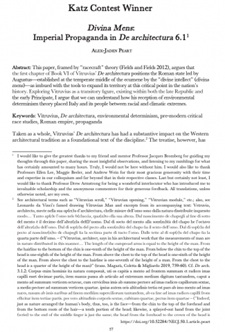 Alex-Jaden Peart
Alex-Jaden Peart
May, 2023
New England Classical Journal, vol. 50, iss. 1Ancient History and Society, Latin Language and Literature, Reception Studies | Journal Article
This paper, framed by “racecraft” theory (Fields and Fields 2012), argues that the first chapter of Book VI of Vitruvius’ De architectura positions the Roman state led by Augustus—established at the temperate middle of the ecumene by the “divine intellect” (divina mens)—as imbued with the tools to expand its territory at this critical point in the nation’s history. Exploring Vitruvius as a transitory figure, existing within both the late Republic and the early Principate, I argue that we can understand how his reception of environmental determinism theory placed Italy and its people between racial and climatic extremes.- Probabilities Involving Directional Similarity
 John Newell
John Newell
January, 2023
Originally published in The Mathematical Scientist 39 37-44 (2014) and 41 74 (2016).Ancient Philosophy and Science | Journal Article
In this paper, we explore the mathematics behind a method for discovering, comparing, or computing the degrees of similarity or dissimilarity between the orientations of two objects, such as two polarizing filters. We proceed by analogy through an analysis of two Euclidean vectors. The method has been in use since the 1800s, but only as a formula whose mathematical origins have been unexplained. The abscence of an explanation has led to confusion and speculation regarding causal links. The explanation offered here involves projecting the components of a vector back onto it, thus forming constituent parts which reflect the influence of the components. This allows for the formation of probabilities which reflect degrees of similarity between the vector and its components. Since vectors are directional, the application to oriented objects is fairly direct. In the related experiments, such as those related to the Law of Malus or to EPR-Bell experiments in quantum mechanics, the outcomes stochastically reflect changes in the orientations of the detection equipment, and so the search for causal links is shown to be unnecessary.
2022
- An Overview of the Offering Trays and Soul Houses in the Penn Museum
 Lisa Haney
Lisa Haney
December, 2022
Journal of Ancient Egyptian Interconnections, Volume 36Art and Archaeology | Journal Article
This paper is part of ongoing research into the largely unpublished corpus of offering trays and soul houses currently in the care of the University of Pennsylvania Museum of Archaeology and Anthropology. The goal of this preliminary exposition is to draw attention to the Penn material, examine how it fits with past studies, and explore the broader uses and significance of offering trays and soul houses during the First Intermediate Period and Middle Kingdom. This paper addresses the interconnections between the worlds of the living and the dead and touches on the myriad of ways the ancient Egyptians chose to model, display, and represent those connections.
- Finding Ithaca, and Sense in Parmenides B1.3: The Homeric Meaning of Εἰδώς
 John Newell
John Newell
September, 2022
The Classical Quarterly, vol. 72, no. 1
Cambridge University PressAncient Philosophy and Science, Greek Language and Literature | Journal Article
A close reading of the contexts of several Homeric passages reveals that Homer often uses εἰδώς with ironic force. This realization sheds light on several passages discussed herein, including: 1) Homer's description of the location of Ithaca, which is shown to be Odysseus’ strategic lie that directs the Phaeacians to the local stronghold (nearby Dulichium), and 2) the manuscript reading of Parmenides B1.3, which is shown to harbour no internal conflict even if its εἰδότα φῶτα (‘one who knows’) is in a state of confusion (ἄτῃ), because εἰδότα can signal incomplete or confused knowledge, or even a lack of it. Other literary clues in Parmenides B1 are shown to support this reading.
- “Never Bury My Bones Apart From Yours”: Iliad Reception in Xena: Warrior Princess
 Sarah Brucia Breitenfeld
Sarah Brucia Breitenfeld
August, 2022
The Routledge Companion to the Reception of Ancient Greek and Roman Gender and Sexuality
Routledge: New YorkGreek Language and Literature, Reception Studies | Book Chapter
This chapter examines the narrative similarities between the Iliad and select episodes from the television show Xena: Warrior Princess. The author structures the argument in three parts. First, they examine how Achilles and Patroclus’ relationship has been characterised both in Classical Athens and in modern scholarship. Second, they address the representation of Xena and Gabrielle in XWP, focusing on three episodes with story structures that enact distinctive aspects of the Iliad. Finally, the author uses Cultural Studies to examine LGBT viewer responses to Xena and Gabrielle. They argue that Xena and Gabrielle are recognizable as a reception of Achilles and Patroclus and that both pairs belong to a broader tradition of debated same-sex couples.
- The Poet, the Puella, and the Penis: Impotence and Elegiac Failure in Maximianus and Ovid

Grace Funsten
August, 2022
The Routledge Companion to the Reception of Ancient Greek and Roman Gender and Sexuality
Routledge: New YorkAncient History and Society, Latin Language and Literature | Book Chapter
The dynamics of gender and sexuality in Augustan elegy have been well studied since Judith Hallett’s 1973 article on the “counter-cultural” power of women in the genre. In the mid-sixth century, life was dramatically different in the eastern and western halves of the Roman Empire. Whereas the administrative structure of the East remained strong until the late sixth century, the West’s government was weak already in the fourth century because of barbarian incursions and civil wars. Maximianus creates a contrast between and East and West throughout the poem, treating the Graia puella as representative of the East and the lover-poet of the West. The connection between impotence, death, and the lover-poet’s failure as a poet suggests that the genre, like the penis, is dead. In Maximianus, erectile dysfunction represents the physical side of his speaker’s unmanliness, which is also marked by his sexual excess in sleeping with many women throughout the Elegies.
- Dangerous Defaults: Demographics and Identities Within and Without Video Games
 Marcie Persyn
Marcie Persyn
August, 2022
Women in Classical Video Games
Bloomsbury AcademicReception Studies | Book Chapter
In this chapter, I will sample five popular historical/archaeological video games that were launched and received critical success within the five-year span of 2013–17. After compiling the statistics of how female playable avatars and NPCs are represented within these games in proportion to their male counterparts, I will utilize this data to analyse how designers depict women in each of these games, and thus how gamers are encouraged to respond to female characters. Through this information, we may begin to understand more fully the ramifications of the inclusions, as well as the exclusions, of women from these games.
- Cydippe Defixa: An Examination of Ovid’s Magical Language In Heroides 21
 Grace Funsten
Grace Funsten
May, 2022
The Classical Journal, vol. 117, no. 4
Johns Hopkins University Press: BaltimoreLatin Language and Literature | Journal Article
Throughout Heroides 21, Ovid’s Cydippe complains vehemently about the suffering that Acontius has caused her, only to agree to marry him at the end of the poem. In this paper, I argue that her agreement is the result of erotic magic in the form of Acontius’ inscribed apple. While Ovid suggests the presence of magic in this story through specific vocabulary and broader language reminiscent of amatory defixiones, these suggestions are intentionally ambiguous: Cydippe, the narrator, never realizes that she is the victim of a spell. Nevertheless, the magical constraints on her mind and emotions bring her ability to consent to the marriage libens (Ep. 21.240) into question.
- The comparative impact of Old English and Classical language on the poetics of modern fantasy
 Kalan N. Culver McDonald
Kalan N. Culver McDonald
April, 2022
Undergraduate Thesis, University of Pittsburgh. (Unpublished)Greek Language and Literature, Reception Studies | Scholarship
Emerging largely in the mid-twentieth century, the modern corpus of fantasy literature has risen to cultural prominence through works such as The Lord of the Rings, Harry Potter, A Game of Thrones, and their subsequent screen adaptations. Moreover, in each lie distinct instances of poetic interludes, a style unique to fantasy in its frequency. Yet, in order to understand the nuances of the genre, it is critical to thoroughly evaluate the landscape of linguistic traditions in which its language lies. In other words, one must consider how the style of modern fantasy exists in quasi-filial relation to past traditions. In so doing, it is possible to observe characteristics of both Classical and Old English form which have persisted into modernity. This research aims to evaluate the extent to which each tradition has impacted fantasy poetics by observing forms derived from oral-formulaic composition, figurative language, and the cultural values prioritized by alternative naming patterns. Furthermore, this work seeks to utilize J.R.R. Tolkien, due to his scholarly work in philology in conjunction with the widespread influence of his fantasy novels, as a lens through which to view the dissemination of the structures of Antiquity and to justify the practice thereof. Ultimately, this enables the reader and researcher to further discuss the subconscious values ingrained in fantasy literature through language and additionally reframes commonly accepted views as to the prominent linguistic influences behind Western literature and popular culture.
- Cultural exchange and colonization: considering Roman-Italian relations within the context of contemporary postcolonial literature and theory
 Ryan Steinly
Ryan Steinly
April, 2022
Undergraduate Thesis, University of Pittsburgh. (Unpublished)Ancient History and Society, Latin Language and Literature, Reception Studies | Scholarship
Through this work I intend to consider ancient Roman history through a modern postcolonial lens in order to better understand the particular nature of Roman Italian colonial frameworks and power dynamics. By placing ancient history in conversation with modern perspectives on postcolonial theory and subversive colonial dynamics, I intend to develop a refined conception of Romanization and reinforce the human aspect involved in this ancient process of colonization and Roman expansion. In particular, I consider Roman relations with Italian communities during the second and first centuries BCE, through a variety of case studies in order to contextualize the specific nature of this cultural contact and exchange. Then, as a point of comparison, I consider postcolonial theory and perspectives. Specifically, I will analyze a work by Gloria Anzaldúa in order to understand the human experience involved in processes of subversive colonization and wars of cultural hegemony. It is my goal to develop a refined understanding of the experiences of Italian individuals in this period as informed by contemporary perspectives of postcolonial theory.
- Gender roles and non-binary representation in Ptolemaic and Roman Egypt
 Emily Wiley
Emily Wiley
April, 2022
Undergraduate Thesis, University of Pittsburgh. (Unpublished)Ancient History and Society, Art and Archaeology | Scholarship
This thesis analyzes how artistic depictions of different genders are represented in Ancient Egyptian art as more binary under the influences of Ancient Greek and Roman rule. I demonstrate this development through the archaeological record of remaining sculptures and other human figurines, as well as literary sources and historical interpretation, which indicate a shift in artistic style and other societal norms. Furthermore, many of these samples are artifacts of the elite and wealthy upper classes who had the time and resources to commission such art. My focus is on the time period when Ptolemy I Soter started his Egyptian monarchal dynasty in 305 B.C.E., and after Rome seized Egypt as a colony in the Battle of Actium of 31 B.C.E. While sex is traditionally contrasted between the masculine and feminine, non-binary is a term that refers to a gender which does not identify with either male or female. Ancient Egypt itself had its own gendered art characteristics and history of androgynous sculptures and figures, usually in the representations of the gods and monarchs. However, with the cultural influences of the non-Egyptian monarchs, ruling figures and other depictions of gender identities display more hyper-feminine and hyper-masculine characteristics. Yet, androgynous artistic sculptures decrease during the Roman reign with the Greek sexualization of androgyny and different ideals towards depictions of women than the Romans. As the gender roles of the matronae and viri are more enforced within artistic depictions in Roman Egypt, the number of non-binary traits decreases in Roman Egyptian art because the ideal values change, allowing traditional Roman ideals of femininity and masculinity to take precedence over the actual appearance of the individual.
- Marginalised Populations in the Ancient Greek World: The Bioarchaeology of the Other
 Carrie L. Sulosky Weaver
Carrie L. Sulosky Weaver
March, 2022
Edinburgh University PressAncient History and Society, Art and Archaeology, Greek Language and Literature | Book
Studies of the ancient Greek world have typically focused on the life histories of elite males as the group that has made the most distinct mark on ancient Greek literature, art and material culture. As a result, the voices of foreigners, the physically impaired, the impoverished and the generally disenfranchised have been silent, which has substantially complicated the creation of a historical narrative of these marginalised groups.
Marginalised Populations in the Ancient Greek World: The Bioarchaeology of the Other explores literary, visual, material and biological evidence of marginality in the ancient Greek world. It provides the first comprehensive and contextual treatment of the biological evidence for marginality in the ancient Greek world, one which argues that intersectionality was the driving factor behind social marginalisation in the Late Archaic/Classical Greek world. To this end, it considers social marginalisation from the vantage point of mortuary evidence.
2021
- Fair to see, soon to fall: the classical heroine and Tolkien's "unmortal" women
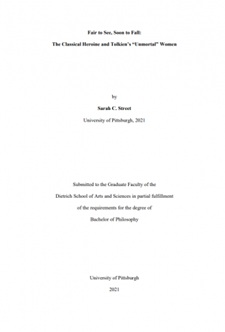 Sarah C. Street
Sarah C. Street
December, 2021
Undergraduate Thesis, University of Pittsburgh. (Unpublished)Greek Language and Literature, Latin Language and Literature, Reception Studies | Scholarship
The female characters of J.R.R. Tolkien’s Legendarium, although oft-criticized for their scarcity in number, fully embody one of the most central themes of the story: the complicated interplay between death and immortality. While Tolkien admitted that the love and anguish of mortal Men and immortal Elves make up the heart of his Legendarium, the women possess the distinct ability to transcend the boundary of life and death. Interpreting them according to this paradigm reveals an archetype which I call “the unmortal woman,” and that likewise reveals the unique power that their boundary-crossing enables, leading to strongly feminist readings of the text.
Although Tolkien was adamant that The Lord of the Rings contains no “inner meaning or ‘message,’” the unmortal woman’s appearances throughout history prove that she is an enduring figure with an enduring purpose: to challenge the often rigid ways that women and femininity are represented in literature. As such, this paper examines several of not only Tolkien’s unmortal women, such as Lúthien, Arwen, and Éowyn, but also several iterations of the figure which came before, such as Alcestis, Psyche, and Juliana. I will demonstrate how Tolkienian women transcend the mortal/immortal binary in much the same manner as their predecessors, and thus use the unmortal woman as a lens through which to cast new light on the women of fantasy past, present, and future.
In drawing these connections between women in Tolkien and older texts, it is not my goal to simply prove the existence of classical and medieval influence on Tolkien as a writer—a fact which is already well known and indisputable. Rather, I wish to explore the reception of these influences, and in doing so, to show how the connections I have drawn serve to shed new light on the place of women within the Legendarium.
- Sport and Peace: Panhellenic Myth-Making and the Modern Olympics
 Jacques A. Bromberg
Jacques A. Bromberg
December, 2021
Brill's Companion to the Reception of Ancient Rhetoric (Brill's Companions to Classical Reception, Volume: 23)
Leiden: Brill
Volume Editors: Sophia Papaioannou, Andreas Serafim, and Michael EdwardsAncient History and Society, Reception Studies | Book Chapter
This volume, examining the reception of ancient rhetoric, aims to demonstrate that the past is always part of the present: in the ways in which decisions about crucial political, social and economic matters have been made historically; or in organic interaction with literature, philosophy and culture at the core of the foundation principles of Western thought and values. Analysis is meant to cover the broadest possible spectrum of considerations that focus on the totality of rhetorical species (i.e. forensic, deliberative and epideictic) as they are applied to diversified topics (including, but not limited to, language, science, religion, literature, theatre and other cultural processes (e.g. athletics), politics and leadership, pedagogy and gender studies) and cross-cultural, geographical and temporal contexts.
- Global Classics
 Jacques A. Bromberg
Jacques A. Bromberg
April, 2021
Global Classics
Routledge (Abington, UK)Ancient History and Society, Art and Archaeology, Reception Studies | Book
What makes Classics "global", and what does it mean to study the ancient world "globally"? How can the study of antiquity contribute to our understanding of pressing global issues? Global Classics addresses these questions by pursuing a transdisciplinary dialogue between Classics and Global Studies.
Authoritative and engaging, this book provides the first field-wide synthesis of the recent "global turn" in Classics as well as a comprehensive overview of an emerging field in ancient studies. Through focused readings of ancient sources and modern scholarship, the author introduces readers to three key paradigms that are essential to research and teaching in global antiquities: transborder, transhistorical, and transdisciplinary.
Global Classics will appeal to educators, students, and scholars interested in the application of globalization theories and paradigms in ancient studies, in globalizing their teaching and research, and in approaches to contemporary global issues through the study of the remote past.
- The Bankes Homer: a window into Homeric song
 Thyra-Lilja Altunin
Thyra-Lilja Altunin
April, 2021
The Bankes Homer: a window into Homeric songUndergraduate Thesis, University of Pittsburgh. (Unpublished)
Greek Language and Literature | Scholarship
This thesis presents my analysis of the Bankes Homer papyrus with the intent to gain insights into aspects of Homeric performance. Over the past century, scholars have largely reconstructed the performance tradition of the Homeric epics, the Iliad and the Odyssey, their social context, meter and composition, and dissemination, yet the sound of Homeric song remains shrouded in mystery. What little we know has come largely from the study of the songs depicted in the poems themselves, from the descriptions of Homeric performances in other ancient authors, and through comparison with living traditions of oral composition. Another rare and underappreciated source of information, however, are the surviving, material texts of the Homeric poems themselves which scholars have hypothesized could provide us possibly with a more direct understanding of some elements of the performance practices of the Homeric epic performance traditions. An example of this sort of text, one that may contain clues to the history of Homeric epic performance, is the “Bankes Homer” (= P. Lond. Lit. 28). This papyrus, dating from the 2nd century CE, is among the best preserved and longest Homeric papyri, preserving approximately 677 verses from Book 24 of the Iliad (lines 127-804). One of its unique features, besides its length, is the markings that are present above nearly every line of text. These contain diacritical markings (accents, breathings, and diaereses), markings of quantity, punctuation, and various scholia, which serve to organize the text. The research presented in this thesis, based on the systematic examination of these markings, argues that they reflect features of the performance of Book 24 of the Iliad. Through a process called melodization, I use the ancient markings in the Bankes Homer papyrus to attempt a reconstruction of the melody of the lines that could have been sung by the performer/singer of the epic. In particular, I focused on the laments for Hector in lines 719-745 and considered how the content of the lines could affect how the melody sounds. Throughout my whole analysis, I have found that the Bankes Homer papyrus appears to be a unique document that opens for us a remarkable window into Homeric song.
- Optical theory and feminine auctoritas within Chaucer's the Tale of Melibee with an English translation of Albertanus of Brescia's Liber consolationis et consilii in full
 Madeline Rose Fox
Madeline Rose Fox
April, 2021
Undergraduate Thesis, University of Pittsburgh. (Unpublished)Latin Language and Literature, Reception Studies | Scholarship
There is an immediate discrepancy between Chaucer’s the Tale of Melibee and its base text, Albertanus of Brescia’s Liber consolationis et consilii: Sophie’s wounds. Chaucer does not include the eyes in the list of her wounds, whereas Albertanus of Brescia does. This discrepancy is often thought to be a mere scribal error, causing this aspect of the translation to be overlooked. However, evidence shows that this difference in translation is almost certainly not a scribal error. There is only one known French manuscript that replaces the word “yeux” with “piez.” It is both unlikely that Chaucer used this manuscript and that he overlooked this mistake. Therefore, this was a conscious choice of Chaucer’s. This unlocks an entirely new and intricate layer of optical theory and feminine auctoritas within the tale. Allowing the eyes to remain unharmed, Chaucer creates an opportunity for Prudence and her feminine wisdom to take center stage. The story’s predominantly feminine voice is reminiscent of that of Boethius’ Lady Philosophy as well as other female personifications of the time. However, Prudence’s prose is distinct, and one of humanity rather than abstraction. Whereas a female personification like Lady Philosophy speaks in musical verse and empty proverb, Prudence puts meaning behind her words through the innately human quality of deduction. Most importantly, Prudence’s words are presented in prose rather than verse, allowing her speech to act as standard dialogue. It is only the presence of eyes within the tale that allows this strong female figure to own her own voice. Applying medieval optical theory to the Tale of Melibee in this way allows for a deep analysis of Prudence’s wisdom as well as her authoritative role in her medieval marriage.
- BMCR 2021.01.06 Coughlan on Floridi, Edilo, Epigrammi: introduzione, traduzione, testo critico e commento
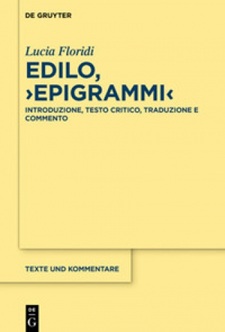 Taylor Coughlan
Taylor Coughlan
January, 2021
Bryn Mawr Classical Review
BMCR 2021.01.06 Edilo, Epigrammi: introduzione, traduzione, testo critico e commento
Lucia Floridi, Edilo, Epigrammi: introduzione, traduzione, testo critico e commento. Berlin; Boston: De Gruyter, 2020. Pp. viii, 250. ISBN 9783110629620 $126.99.
Review by Taylor Coughlan, University of Pittsburgh (tsc43@pitt.edu)Greek Language and Literature | Journal Article
Since the publication of the Milan Papyrus nearly two decades ago, Greek epigram has become an increasingly active field of study. Scholarly interest in the genre has manifested itself, in part, in a raft of new critical editions and commentaries on individual authors that have reassessed and supplemented the foundational work of D. L. Page and A. F. S. Gow, such as Antipater of Sidon, Asclepiades, Crinagoras, Dioscorides, and Nicarchos, to name only a selection.[1] In the book under review, Floridi has produced an excellent text and commentary on the early Hellenistic epigrammatist Hedylus. Though less well-known than his better attested contemporaries Posidippus and Asclepiades, Hedylus was, as Floridi demonstrates, an innovative contributor to the development of the genre. (Re)reading these poems with Floridi as a guide, one will come to appreciate Hedylus as a critical voice in contemporary aesthetic debates, a deft manipulator of generic expectations, and a trailblazer in satiric epigram, among other facets of the poet’s talents.
The volume consists of an introduction, text with accompanying translation, a detailed commentary, two appendices, a bibliography, three indices (verborum, locorum, and nominum et rerum notabilium), and a map of Cilicia Trachea and Cyprus.
2020
- Lovely Earth (Leonidas of Tarentum Anth. Pal. 7.440 = Gow/Page, HE 11)
 Taylor Coughlan
Taylor Coughlan
October, 2020
PhilologusGreek Language and Literature | Journal Article
Scholars and editors of Hellenistic epigram have often discounted the authenticity of dialectal variance attested in the manuscript tradition, either privileging the dialectal variant that conforms to the predominant dialect in the epigram or even choosing to change attested dialect forms to produce a uniform coloring. This article argues that the addresses to earth at lines 2 and 10 of Leonidas of Tarentum Anth. Pal. 7.440 = Gow/Page, HE 11 were originally Doric. I show that there are paleographic as well as literary grounds for the reading. In particular, the presence of Doric forms at these two points in the epigram evoke the language of tragic lament. The findings of this article have potentially significant implications for the editing of dialectal mixture in the Greek Anthology.
Keywords:
dialect; textual criticism; epigramClick here to learn more
- The Poetics of Dialect in the Self-Epitaphs of Nossis and Leonidas of Tarentum
 Taylor Coughlan
Taylor Coughlan
October, 2020
Classical Philology Volume 115, Number 4
University of ChicagoGreek Language and Literature | Journal Article
Nossis and Leonidas of Tarentum used dialect in their self-epitaphs as an integral component in the construction of their authorial identities. Using her native Doric, Nossis both situates herself in a Sapphic tradition of female-centered poetry and reinforces her identity as a Locrian epigrammatist. Leonidas of Tarentum laments an itinerant lifestyle that has resulted in a death abroad and models himself after Odysseus. Leonidas speaks in an Ionic voice that contrasts with his native Doric, a self-reflexive comment on his poetic identity as a man displaced, an anti-Odysseus whose itinerancy guarantees the perpetuation of his poetry.
- Pliny’s Telemacheia Epic and Exemplarity under Vesuvius
 Jacques A. Bromberg
Jacques A. Bromberg
October, 2020
Urban Disasters and the Roman Imagination, Edited by Virginia M. Closs and Elizabeth Keitel
De GruyterGreek Language and Literature, Latin Language and Literature | Book Chapter
Pp. 47-70.
- Pax Olympica: The Rhetoric and Ideology of the Olympic Truce
 Jacques A. Bromberg
Jacques A. Bromberg
October, 2020
pp. 267-296 in LA PAZ: PERSPECTIVAS ANTIGUAS SOBRE UN TEMA ACTUAL, edited by Ronald Forero Álvarez, Gemma Bernadó Ferrer, Juan Felipe González Calderón, Laura Almandós Mora
Universidad de los Andes, Universidad Nacional de ColombiaAncient History and Society, Greek Language and Literature, Reception Studies | Book Chapter
Este libro pretende buscar luces en los clásicos para iluminar nuestro presente, un presente inestable y conflictivo, un presente en el que la muerte y la desolación se propagan como una plaga, un presente en el que la paz es un anhelo para millones de personas inmersas en numerosos conflictos alrededor del mundo. Se trata de una contribución a la reflexión en torno a ese anhelo de paz universal gracias a las contribuciones de investigadores de la Antigüedad Clásica que participaron como coautores a partir de sus investigaciones. Sus indagaciones parten de su conocimiento de los textos antiguos para reflexionar sobre la paz, ayudarnos a entender los conceptos y buscar caminos alternativos hacia ella, no solo en Colombia, sino en el mundo.
- Lucilius Philosophos? Manipulation of Greek Philosophy in the Early Roman Satires
 Marcie Persyn
Marcie Persyn
September, 2020
The Classical Outlook, Volume 95, No. 3
American Classical LeagueAncient History and Society, Ancient Philosophy and Science, Latin Language and Literature | Journal Article
It is the purpose of this paper to examine the Lucilian manipulation of Greek philosophy and to question how the satirist’s account reflects or potentially distorts the context of intercultural adaptation of Greek philosophy within the Roman world. I will focus on evidence found in one of the longer fragments of the Satires, building on work begun by Farrell 2014 and Lévy 2017. This fragment (784-90M/805-11W/28.29C/789-795K)—likely produced circa 131 BCE (see Raschke 1979)—is part of a satire that told the tale of an attempted lovers’ tryst; the fragment itself depicts the unfortunate paramour brought up before the magistrate on the grounds of physical assault. It is a complicated account, and culminates in a confrontation between the judge and defendant, into which Greek philosophical terminology is jarringly inserted.
But the humor, and, indeed, the point of the satire is ultimately lost if the reader is not simultaneously fluent in both languages and, furthermore, well-versed in the aspects of each culture that are activated in these lines. What we gain from close study of this fragment, then, is not only a glimpse of the erudite and elusive comedy in play during the late second century BCE, but an idea of the Greco-Roman cultural knowledge required—and expected—of readers who wished to understand the joke. Lucilius tackles Greek philosophy from a distinctly Roman point of view, and, in so doing, offers modern scholars a compelling example of Greek and Roman cultural interaction during the Republican era.
- Infelix Dido vs. Δεινὴ Medea: Fate and the Puella Relicta Trope in Ancient Myth
 M. Sanglikar
M. Sanglikar
April, 2020
Senior Thesis, Department of Classics
University of PittsburghGreek Language and Literature, Latin Language and Literature | Scholarship
- Visualizing Coregency: An Exploration of the Link Between Royal Image and Co-Rule During the Reign of Senwosret III and Amenemhet III
 Lisa Haney
Lisa Haney
April, 2020
Harvard Egyptological Studies, Volume 8
Brill: Leiden, The NetherlandsArt and Archaeology | Book
In Visualizing Coregency, Lisa Saladino Haney explores the practice of co-rule during Egypt’s 12th Dynasty and the role of royal statuary in expressing the dynamics of shared power. Though many have discussed coregencies, few have examined how such a concept was expressed visually. Haney presents both a comprehensive accounting of the evidence for coregency during the 12th Dynasty and a detailed analysis of the full corpus of royal statuary attributed to Senwosret III and Amenemhet III. This study demonstrates that by the reign of Senwosret III the central government had developed a wide-ranging visual, textual, and religious program that included a number of distinctive portrait types designed to convey the central political and cultural messages of the dynasty.
- Aeschylus and the Cuban Counter-Revolution
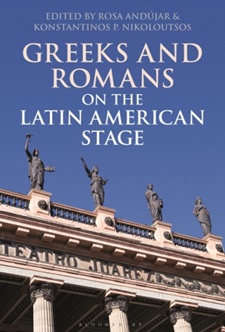 Jacques A. Bromberg
Jacques A. Bromberg
January, 2020
pp. 157-169 in "Greeks and Romans on the Latin American Stage", edited by Rosa Andújar, Konstantinos P. Nikoloutsos
Bloomsbury, 2020Greek Language and Literature, Reception Studies | Book Chapter
The first comprehensive treatment in English of the rich and varied afterlife of classical drama across Latin America, this volume explores the myriad ways in which ancient Greek and Roman texts have been adapted, invoked and re-worked in notable modern theatrical works across North and South America and the Caribbean, while also paying particular attention to the national and local context of each play.
A comprehensive introduction provides a critical overview of the varying issues and complexities that arise when studying the afterlife of the European classics in the theatrical stages across this diverse and vast region. Fourteen chapters, divided into three general geographical sub-regions (Southern Cone, Brazil and the Caribbean and North America) present a strong connection to an ancient dramatic source text as well as comment upon important socio-political crises in the modern history of Latin America. The diversity and expertise of the voices in this volume translate into a multi-ranging approach to the topic that encompasses a variety of theoretical and interdisciplinary perspectives from classics, Latin American studies and theatre and performance studies.
- Cynicism: Or, Philosophy as a Way of Strife
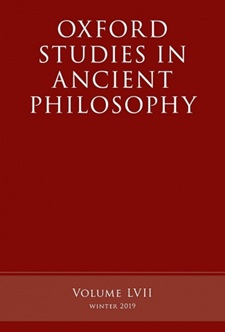 Christian Wildberg
Christian Wildberg
January, 2020
Oxford Studies in Ancient Philosophy, Vol. 57
Oxford University PressAncient Philosophy and Science | Book Chapter
Historians of philosophy (such as Hegel, Hadot, Cooper, among others) tend to marginalize the ancient Cynics as philosophically uninteresting, and moreover as irrelevant for a proper understanding of the sense in which philosophy in antiquity used to be a way of life. To be sure, the Cynics lived very distinctive and unconventional lives, but whatever it was that they were doing, it cannot have been—so the historians claim—a conduct rooted in philosophical reason and argument. This paper first musters the grounds typically given for this kind of deflationary view and then proceeds to examine the sparse but nevertheless suggestive evidence about ancient Cynicism that the (predominantly Stoic) doxographical tradition handed down to us. In the end, it comes to a conclusion that is diametrically opposed to the prevailing opinion of the cynics as inconsequential non-philosophers.
2019
- To Include or Exclude? Marginalization of the Deformed in the Classical Greek World
 Carrie L. Sulosky Weaver
Carrie L. Sulosky Weaver
December, 2019
Journal of Greek Archaeology 4: 163-179Ancient History and Society, Art and Archaeology | Journal Article
Ancient literary sources provide us with conflicting accounts concerning whether the physically deformed and impaired were socially marginalized in the ancient Greek world. However, one underutilized source of evidence that bears the potential to shed light on this debate is the burial record. Through the analysis of human skeletal remains recovered from graves, individuals with physical deformities can be identified. Then, by studying the archaeological contexts of these individuals with particular focus placed on the mode of burial, spatial orientation, body position, amounts and types of grave goods, and the ways in which these factors deviate from established cemetery norms, striking details can be revealed about the deceased’s social status.
Despite its potential to address the issue of whether certain groups of individuals were socially integrated or marginalized, the use of burial evidence remains challenging as skeletal evidence of physical deformities is rare, especially for the Classical period. There are, however, two unique skeletons from the Greek colony of Kamarina in southeastern Sicily that bear evidence of cranial deformation. These individuals, T413 and T 539, date to the Classical period (ca. 5th to 3rd century BC) and both appear to have been afflicted with craniosynostosis, or the premature fusion of cranial sutures. Using these individuals and their burial contexts as case studies, this article will explore the likelihood of whether T413 and T 539 were socially integrated or marginalized at Kamarina. The article begins with a brief description of craniosynostosis and a survey of its known occurrences in the ancient Greek world. The focus then shifts to a general discussion of Classical burial practices at Kamarina, followed by details concerning the burial contexts of T413 and T 539. Based on biological, archaeological, and spatial evidence, it is argued that T413 and T 539 were both socially integrated at Kamarina. It is hoped that the bioarchaeological approach used here might find future application in other studies of the potentially marginalized individuals.
- Medea, la Llorona, y la tragedia de las desplazadas
 Jacques A. Bromberg
Jacques A. Bromberg
September, 2019
IX Jornadas Filológicas - Migración y ciudadanía: perspectivas antiguas sobre un debate actual
Bogotá, Colombia: Universidad Nacional de Colombia, Biblioteca Nacional de Colombia, Universidad de los AndesGreek Language and Literature, Reception Studies | Conference Presentation
Resumen: El cuento de la mujer que se venga de un marido infiel o abusivo al asesinar a sus hijos es una leyenda que cruza los océanos, las fronteras y los siglos. En la mitología griega, aunque la versión ateniense del mito es el la más famosa, la figura de Medea se destacó también en la tradición mitológica y en la práctica ritual de Corinto. De la misma manera, la figura mítica de La Llorona, quien asesinó a sus propios hijos en venganza o en duelo, es popular en la narración mexicana en ambos lados de la frontera entre Estados Unidos y México. Aunque la Medea de Eurípides se ha identificado a veces como un texto de origen para esta leyenda, algunos han propuesto que La Llorona tenga un origen indígena en el folclore precolombino. Sin embargo, hasta recientemente no se había ofrecido un método para comparar las dos tradiciones míticas sin invocar el lenguaje de “influencia”. Esta ponencia examina algunos de los puntos de contacto entre las leyendas de Medea y La Llorona, y sugiere formas de leer la tradición antigua de Medea (comenzando con Eurípides, pero incluyendo también las recepciones latinoamericanas de Usigli, Novo, Ríos, Triana, Montero y otros) al lado de la tradición moderna de La Llorona (especialmente las versiones dramáticas de Huerta y Moraga). Una tal lectura panóptica nos permite no solo entender cómo ambas tradiciones funcionan como alegorías culturales, sino también observar en la tradición viva de La Llorona cómo se forman y se desarrollan los cánones mitológicos.
- Greek Tragedy and the Socratic Tradition
 Jacques A. Bromberg
Jacques A. Bromberg
May, 2019
Brill's Companion to the Reception of Socrates
Leiden: Brill, pp. 41-74Ancient Philosophy and Science, Greek Language and Literature, Reception Studies | Book Chapter
Brill’s Companion to the Reception of Socrates, edited by Christopher Moore, provides almost unbroken coverage, across three-dozen studies, of 2450 years of philosophical and literary engagement with Socrates – the singular Athenian intellectual, paradigm of moral discipline, and inspiration for millennia of philosophical, rhetorical, and dramatic composition. Following an Introduction reflecting on the essentially “receptive” nature of Socrates’ influence (by contrast to Plato’s), chapters address the uptake of Socrates by authors in the Classical, Hellenistic, Roman, Late Antique (including Latin Christian, Syriac, and Arabic), Medieval (including Byzantine), Renaissance, Early Modern, Late Modern, and Twentieth-Century periods. Together they reveal the continuity of Socrates’ idiosyncratic, polyvalent, and deep imprint on the history of Western thought, and witness the value of further research in the reception of Socrates.
- Myth and Argument in Plato's Phaedo
 Brooke McLane-Higginson
Brooke McLane-Higginson
April, 2019
Doctoral Dissertation, University of Pittsburgh.Ancient Philosophy and Science, Greek Language and Literature | Scholarship
This dissertation argues for reading the myth at the end of Plato’s Phaedo as part of the overall argumentative structure of the dialogue. Using the Toulmin method of argument analysis, I analyze each of Socrates’ proofs for the immortality of the soul, as well as the myth and the argument before the proofs. These analyses show that each of Socrates’ arguments rely on the hypothesis of the Forms, and that some of them also employ the hypothesis that the soul is immortal. I then analyze the demonstrative status of each argument, by which I mean how strongly or weakly Socrates claims to have ‘proven,’ ‘shown,’ etc. the conclusion of the argument. The result of this analysis is that the arguments that do not use the hypothesis of the soul’s immortality all have a higher demonstrative status than those that do, suggesting that the hypothesis of immortality leads to somewhat less sure conclusions than the hypothesis of the Forms. I then argue that we should read the argumentative structure of the dialogue as an example of the method of hypothesis as Socrates characterizes it in Phaedo: the hypothesis of the Forms is a higher hypothesis while the hypothesis of the soul’s immortality is a lower hypothesis, and the progression of arguments in the dialogue (including the myth) first ascends from the lower hypothesis used in the preliminary argument to the higher hypothesis used in the proofs of immortality, then descends to the lower hypothesis again through the myth. Finally, I argue that the myth has both a rational persuasive function and a non-rational one. Its rational persuasive function is to show the consequences of the hypothesis of immortality, which should give us greater confidence in that hypothesis. Its non-rational persuasive function is to charm away the fear of death and draw its hearers toward a philosophical life. I conclude by identifying several structural and thematic elements of the Phaedo myth that are present also in the myths of Phaedrus and Republic, suggesting that Socrates’ eschatological myths have some structural and thematic consistency across dialogues.
- Peace through Sport: Modern Lessons from Ancient Sources
 Jacques A. Bromberg
Jacques A. Bromberg
April, 2019
Conflict Resolution in Ancient and Modern Contexts I: Literary and Historical Models
Bogotá, Colombia / The Universidad de los Andes and the Colombian War College (ESDEGUE)Ancient History and Society, Greek Language and Literature | Conference Presentation
This paper continues and expands previous work on peace and sport in the ancient world. There is no more enduring value in today’s global sporting culture than the pursuit of peace. Yet it has long been observed that tension between the International Olympic Committee (which emphasizes peace, understanding, and solidarity) and the individual National Olympic Committees (which privilege national interests) leaves international sport vulnerable to crisis. In a forthcoming essay, I examine how the rhetoric of the ancient “Olympic truce” (ekecheiría) has re-emerged in recent years as a tool for promoting peace through sport. Historians have been eager to quip about the ekecheiría that no wars stopped during the ancient games and that philosophical articulations of Panhellenic unanimity (homónoia) were only wishful thinking; but these criticisms, which privilege the city-state (pólis) as the sole point of reference in ancient Greek cultural politics, miss the larger point that ancient athletics did often function, albeit on a more granular scale, as means of conflict resolution. In this paper, I describe various ways in which athletics contributed to ancient peace building processes. Within polities, athletics helped to re-integrate veterans socially, to foster feelings of continuity and belonging, to reunite divided constituencies, and to rebuild an appreciation for the rule of law. Among and beyond polities, the supra-civic structures of athletic training and competition provided opportunities to build different types of networks through individual mobility, connectivity, and reciprocity. Borrowing methodologies from the field of Global Studies, my argument uses ancient evidence alongside modern examples to demonstrate these processes at work in antiquity and today.
- Pars Pro Toto and Personhood in Roman Cremation Ritual: New Bioarchaeological Evidence for the Rite of Os Resectum
 Carrie L. Sulosky Weaver
Carrie L. Sulosky Weaver
E.-J. Graham and A.T. Chamberlain
March, 2019
Bioarchaeology International 2: 240–254Art and Archaeology | Journal Article
Os resectum, or “cut bone,” is an obscure Roman funerary rite known primarily from literary sources. To date, archaeological examples have been recovered from Rome, Ostia, Herculaneum, and Pithekoussai, but no cases have been positively identified in the western provinces of the Roman Empire. This article presents bioarchaeological evidence concerning an unusual pattern of preservation for the bones of a single finger in a burial from a cemetery dating to the late second to mid-third century A.D. in the Roman colony of Lincoln, England. It explores the implications of this evidence for the identification and performance of os resectum and for understanding rites of passage surrounding Roman death. As well as revealing the value of integrating scientific and theoretical perspectives in the investigation of questions surrounding ritual behavior, it is argued that os resectum provides evidence to support the presence of a widespread concept of somatic partibility at the heart of Roman forms of personhood.
- When the Giant Falls: Endurance and Adaptation at Çadır Höyük in the Context of the Hittite Empire and Its Collapse
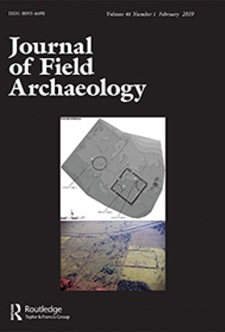 Joshua Cannon
Joshua Cannon
Jennifer C. Ross, Sharon R. Steadman, Gregory McMahon, & Sarah E. Adcock
January, 2019
Journal of Field Archaeology, Volume 44, No. 1Art and Archaeology | Journal Article
At the end of the Late Bronze Age, around 1200 B.C., the Hittite Empire of Anatolia collapsed. While that collapse has been well studied, the effects on Hittite-held lands are less so, with many archaeologists positing an abandonment in Hittite territories for a period of time early in the Iron Age. Recent excavations at Çadır Höyük, 70 kilometers from the Hittite capital, have revealed both typical Hittite material culture belonging to the Late Bronze Age, including mass-produced ceramics and massive fortifications, as well as evidence suggesting that the site’s residents faced challenges, and adapted accordingly, in the wake of Hittite withdrawal and collapse, during the Early Iron Age. The architecture, ceramics, and zooarchaeological evidence from this rural settlement suggest ways in which residential continuity, cultural resilience, and technological and economic adjustments allowed inhabitants to survive and rebound in the face of political instability.
2018
- The Ancient Art of Transformation: Case Studies from Mediterranean Contexts
 Carrie L. Sulosky Weaver
Carrie L. Sulosky Weaver
R.M. Gondek
December, 2018
Oxford: Oxbow Books, 2018Art and Archaeology | Book
The Ancient Art of Transformation: Case Studies from Mediterranean Contexts examines instances of human transformation in the ancient and early Christian Mediterranean world by exploring the ways in which art impacts, aids, or provides evidence for physical, spiritual, personal, and social transitions. Building on Arnold van Gennep's notion of universal rites of passage, papers in this volume expand the definition of "transformation" to include widespread transitions such as shifts in political establishments and changes in cultural identity. In considering these broadly defined "passages," authors have observed particular changes in the visual record, whether they be manifest, enigmatic, or symbolic. While several papers address transitions that result in hybrid states, others suggest that the medium itself can be integral to interpreting a transition, and in some cases, be itself transformed. Together, the volume covers not only a broad chronological span (c. 6th century BC to 5th century AD), but also various regions across the Mediterranean (Egypt, Greece, and Italy). Reflecting upon issues central to a variety of Mediterranean cultures (Egyptians, Etruscans, Greeks, Romans, and early Christians), The Ancient Art of Transformation documents how personal, societal, and historical changes become permanently fixed in the material record.
- Greater in Death: The Transformative Effect of Convivial Iconography on Roman Cineraria

Carrie L. Sulosky Weaver
December, 2018
Pages 153-180 in R.M. Gondek and C.L. Sulosky Weaver (edd.), The Ancient Art of Transformation: Case Studies from Mediterranean Contexts
Oxford: Oxbow Books, 2018Art and Archaeology | Book Chapter
Romans of all social classes fervently sought some measure of immortality. Bearing witness to these desires, funerary monuments were constructed as appropriate memorials for the dead. Some were commissioned by the deceased themselves or, in the event no provisions had been made prior to death, then surviving family and friends often took it upon themselves to arrange a suitable memorial. A monument served as the deceased’s eternal home and the focus of the cult of the dead, broadcasting the deceased’s identity, social status, and ties to living survivors by means of images and text. Thus, through the commissioning, carving, and erection of funerary monuments, one was afforded an opportunity to simultaneously create a memory of the deceased and ensure its endurance for posterity. During the Early Imperial Period, marble cineraria were the most popular forms of funerary monuments. Augustan peace and stability had precipitated the rise of a middle class that was active in commerce and eager to display its newfound wealth and status. At the same time, Imperial building projects created a marble industry in Rome, making carved marble funerary monuments available and affordable. From the convergence of these social conditions, marble containers designed to hold the cremated remains of the dead were born. Often referred to as cineraria and produced in Rome from the first to the third century CE, their production peaked during the Neronian-Trajanic period. Typically, cineraria feature inscriptions and relief sculptures and vary considerably in size as well as complexity of decoration. From the work of Franz Cumont and Robert Garland to John Clarke, Katherine Dunbabin and Matthew Roller, no sculpted scene on cineraria has received as much scholarly attention as the so-called funerary banquet scene. In its simplest form, the funerary banquet scene consists of a single banqueter reclining on a funerary couch, and it derives from eastern Greek funerary reliefs from the second and first century BCE depicting a ritual meal in honor of the heroized dead. In Roman art, banqueting scenes occur in domestic as well as funerary contexts, and there is a lack of scholarly consensus as to what the scenes represent. Do they symbolize the opulence of elite dining events, activities of an idealized afterlife, or funerary feasts in honor of the deceased? A contextual iconographic and epigraphic analysis of 35 marble cineraria produced in Rome from the first to the second century CE suggests that the scenes were understood to represent earthly events attended by the deceased. Inscriptions reveal that the deceased were either freedmen or the children of freedmen. By appropriating banquet iconography, these freedmen were able to symbolically legitimize their claim to social belonging and form, or reaffirm, their place in Roman society. In death, freedmen seized the opportunity to be slightly greater than they were in life, which, given their backgrounds, was most attractive and desirable. Accordingly, banquet scenes and other motifs on the marble cineraria of freedman created enduring, social memories of the deceased, and ensured their preservation for posterity.
- A New Look at the Stela of Ameny (Cairo CG 20691) and the Possible Coregency of Senwosret III and Amenemhet III
 Lisa Haney
Lisa Haney
November, 2018
Journal of the American Research Center in Egypt, Volume 54Art and Archaeology | Journal Article
Scholars heatedly debate the existence of coregency in the Middle Kingdom, and especially contentious is that between Senwosret III and Amenemhet III. Despite a lack of double-dated monuments, there are numerous stelae and small finds that juxtapose the names of these kings, suggesting co-rule. Furthermore, recent evidence from their funerary complexes, including a control note likely dated to Year 39 of Senwosret III, suggests a roughly 20-year coregency. The stela of Ameny (Cairo CG 20691) is one of three private stelae from Abydos that preserves the names of both kings. Some have argued that these stelae indicate co-rule, while others propose that they merely commemorate the owner’s service under each king. This article explores the implications of a new interpretation of CG 20691 in light of a pair of statues from the mortuary temple of Senwosret III at South Abydos. While one statue links Senwosret III with Osiris-Khentiamentiu, the other connects him with Wepwawet, indicating that the two were conceived of as a pair, representing the two most important deities of Abydos. The stela of Ameny uses similar epithets, relating Senwosret III with Wepwawet and Amenemhet III with Osiris. These associations suggest that the two kings were viewed as a complementary pair, much the same as the two gods. If the text were recorded after the death of Senwosret III, one would expect it to have linked him with Osiris, not Amenemhet III. While this inscription is not an explicit statement of coregency, it is possible that the epithets infer co-rule.
- Ludovico Ariosto, Latin Poetry
 D. Mark Possanza
D. Mark Possanza
Dennis Looney
September, 2018
The I Tatti Renaissance Library 84
Cambridge, MA: Harvard Univeristy Press, 2018Latin Language and Literature | Book
Ludovico Ariosto (1474–1533), one of Italy’s greatest poets, was a leading figure of sixteenth-century Italian humanism. After some years working in the household of Cardinal Ippolito d’Este, to whom he dedicated his dazzling romance epic Orlando Furioso (1516), Ariosto settled in Ferrara under the patronage of Ippolito’s brother Alfonso. He continued to write throughout his life, publishing 214 letters, five plays, seven satires in verse, and dozens of lyric poems in Italian and Latin. Ariosto’s Latin poems, translated into English for the first time in this volume, are remarkable for their erudition, technical virtuosity, and playfulness. This edition provides a new Latin text, the first to be based on a collation of the autograph manuscript and editio princeps, and offers a unique insight into the Latin formation of one of the Renaissance’s foremost vernacular writers.
Dennis Looney is Director of Programs and Director of the Association of Departments of Foreign Languages at the Modern Language Association after many years as Professor of French and Italian at the University of Pittsburgh.
D. Mark Possanza is Associate Professor and Chair of the Department of Classics at the University of Pittsburgh.
Table of Contents
Introduction
The Life of Ludovico Ariosto
Ariosto the Humanist
Ariosto the Vernacular Humanist
The Carmina of Ludovico Ariosto in the Sixteenth Century
Acknowledgments
NotesLatin Poetry
Poems of Ludovico Ariosto
Poems of Uncertain Attribution
Apocryphal PoemsAppendix
Note on the Text and Its Textual History
Abbreviations
Notes to the Text
Notes to the Translation
Bibliography
Index of First Lines
General Index- An Analysis of Byzantine Burials from Hacımusalar Höyük (Turkey).
 Carrie L. Sulosky Weaver
Carrie L. Sulosky Weaver
July, 2018
Anatolian Studies 68: 151–175Ancient History and Society, Art and Archaeology | Journal Article
Abstract: The contents of 118 inhumation burials (seventh to twelfth centuries CE) excavated at Hacımusalar Höyük (ancient Choma) were studied in order to reconstruct the Byzantine population. Overall, the sample was similar to other Byzantine populations: burial customs appear typical of contemporary practices, children are overrepresented, amounts of males and females are roughly equal and heights fall within the average range calculated for Byzantine individuals in the eastern Mediterranean. Individuals from Hacımusalar experienced incidences of skeletal trauma, infections, degenerative joint disease, anaemia, dental diseases, spina bifida occulta and cancer. The dataset provided here is one of the most comprehensive of any Byzantine population in Anatolia and should advance our understanding of the region during this crucial time period.
- Go to Hades! Representations of the Underworld in Antiquity

A. J. Korzeniewski
Lauren Suppo (A&S '21)
July, 2018
Interiority in Roman Literature
32nd PacRim Roman Literature Seminar, University of SydneyLatin Language and Literature, Religion, Myth and Ritual | Conference Presentation
This project looks into representations of the underworld in Greco-Roman antiquity from myth, tragedy, philosophy, and art. It aims to create a comprehensive map of the geography of the underworld, how this picture may have changed overtime, and the reasons for any changes.
- REVIEW: A New Text of Apuleius: The Lost Third Book of the “De Platone.” By Justin A. Stover
 Christina M. Hoenig
Christina M. Hoenig
April, 2018
Classical Philology Volume 113, Number 2 (April 2018) pp. 227–232Ancient Philosophy and Science, Latin Language and Literature | Journal Article
A New Text of Apuleius: The Lost Third Book of the “De Platone.” By Justin A. Stover. Oxford and New York: Oxford University Press, 2016. Pp. [xviii] + 216.
Christina Hoenig (University of Pittsburgh)
Injecting new excitement into Apuleian scholarship, Justin Stover offers an intriguing answer to the long-standing question concerning the identity of the third volume of Apuleius' De Platone et eius dogmate...
A New Text of Apuleius: The Lost Third Book of the “De Platone.” By Justin A. Stover
- Medea and La Llorona in the Gardens of World Literature
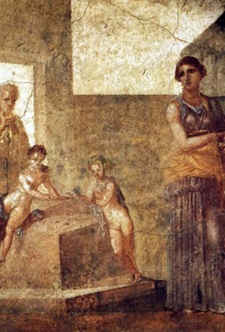 Jacques A. Bromberg
Jacques A. Bromberg
April, 2018
Kenyon Collece (Gambier, Ohio)Greek Language and Literature, Reception Studies | Public Lecture
The legend of the wife and mother who avenges herself on an unfaithful or abusive husband by murdering their children is one that crosses oceans, boundaries and centuries. Even in antiquity, though Euripides’ Athenian treatment of the myth is the most famous, the figure of Medea featured prominently in the mythological tradition and ritual practice of Corinth as well. Likewise, the figure of La llorona, ‘the weeping women’, who murdered her own children in vengeance or in grief, is a mainstay of Mexican storytelling on both sides of the U.S./Mexico border.
While Euripides’ Medea has sometimes been viewed as a source-text, others have argued instead that La llorona has an indigenous origin in pre-Columbian, native American folklore. Until recently, however, no satisfying theoretical framework had been offered for comparing the two traditions without invoking (or rejecting) the language of “influence.” This paper proposes that theories of world literature by Franco Moretti and Pascale Casanova, and especially Alexander Beecroft’s conception of literary “ecologies,” provide a useful model for assimilating diverse literary traditions from around the world. After examining some of the fascinating points of contact between the legends of Medea and La llorona, the paper suggests ways of reading the Medea tradition (beginning with Euripides, but including also important Latin American receptions by Usigli, Novo, Ríos, Triana, Montero and others) alongside the tradition of La llorona (especially the staged versions by Huerta and Moraga).
A panoptic reading of this kind allows us not only to understand how both traditions function as cultural allegories, reflecting changing societal norms, but also to observe in the living language tradition of La llorona how mythological canons form, develop and enter national and global "ecologies" of world literature
2017
- A Sage on the Stage: Socrates and Athenian Old Comedy
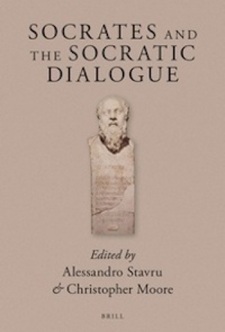 Jacques A. Bromberg
Jacques A. Bromberg
December, 2017
Pp. 31-63 in Socrates and the Socratic Dialogue (Alessandro Stavru and Christopher Moore edd.)
Leiden: Brill, 2017Ancient Philosophy and Science, Greek Language and Literature | Book Chapter
Socrates and the Socratic Dialogue assembles the most complete range of studies on Socrates and the Socratic dialogue. It focuses on portrayals of Socrates, whether as historical figure or protagonist of ‘Socratic dialogues’, in extant and fragmentary texts from Classical Athens through Late Antiquity. Special attention is paid to the evolving power and texture of the Socratic icon as it adopted old and new uses in philosophy, biography, oratory, and literature. Chapters in this volume focus on Old Comedy, Sophistry, the first-generation Socratics including Plato and Xenophon, Aristotle and Aristoxenus, Epicurus and Stoicism, Cicero and Persius, Plutarch, Apuleius and Maximus, Diogenes Laertius, Libanius, Themistius, Julian, and Proclus.
- A universal display? Investigating the role of Panathenaic amphorae in the British Museum
 Monica Merante
Monica Merante
December, 2017
Undergraduate, B. Phil. Thesis
University of Pittsburgh, December 2017Art and Archaeology | Scholarship
Museum displays can serve to educate and inform the public about various concepts and classes of objects. However, the ways in which these displays present information is typically filtered through selective interpretive lenses that reflect a variety of biases, including theoretical and institutional ones. As a result, the museum’s mission and goals directly affect gallery displays by orienting information so that it is in alignment with the museum’s aims. For example, the British Museum of London, a public natural history and archeological museum, is considered to be a universal, or encyclopedic, museum. The creation of universal museums developed alongside imperial powers, whose wealth and influence allowed them to collect a wide variety of specimens, including microbes, plant species, glass, and elements of monumental architecture. Because of the scope of their collections, an encyclopedic museum is expected to comment on many topics using a variety of demonstrative objects. The British Museum, for instance, holds the largest collection of Panathenaic prize amphorae (athletic awards ca. 6th to 2nd centuries BC) outside of Greece. Using Panathenaic amphorae as a case study, this thesis investigates whether the display of the amphorae reflects the British Museum’s position as an encyclopedic museum. In order to better comprehend the relationship between the mission of the universal museum and the artifacts it collects, display choices surrounding the British Museum’s collection of Panathenaic amphorae are analyzed using summative evaluation techniques, such as curator interviews, head counts, and label evaluation. For comparison, the same summative evaluation techniques were employed at the Ashmolean Museum in Oxford, which pursues a different mission as it is a university, rather than a universal museum. The comparison of these two museums highlights the distinction between the British Museum’s universal mission and the Ashmolean’s teaching mission, and it is determined that the British Museum’s display of Panathenaic amphorae does indeed reflect its encyclopedic mission. The large quantity of vases provides the museum with the opportunity to present the vessels in multiple contexts and effectively convey their overall significance—an opportunity that a museum with fewer vases does not have.
- The Harvard Vergil: Memoir of The Black Sheep
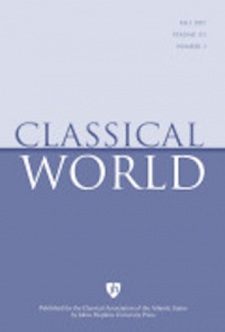 Hans-Peter Stahl
Hans-Peter Stahl
November, 2017
Classical World 111.1 (2017), pp. 108-115Latin Language and Literature | Journal Article
The influence the Harvard School has had on my scholarship? Among the questions you ask, this is a challenging one indeed, Professor Hejduk, and it comes at an (in)opportune time: I have recently published a monograph on the Aeneid (Stahl 2016, subtitled a Recovery Study), which along its way is widely critical of the Harvard School. The book is not written for short-distance readers who pick decontextualized passages, scenes, and "verbal echoes" for their "reading," but it pays attention to the artifice's long-distance organization (the existence of which it has lately been fashionable to deny, with "desiderated" results). So one might of course, with equal justification, ask your question also the other way around. The long-range answer there, I'm afraid, would probably be, to use a Harvard School code word, "disturbing"...
- It's All in the Bones: What Human Remains Reveal about Life in the Ancient Greek World
 Carrie L. Sulosky Weaver
Carrie L. Sulosky Weaver
November, 2017
Denison UniversityArt and Archaeology | Public Lecture
The scientific study of ancient human remains reveals important information about life in past societies. Based on careful visual inspection, it is possible to determine the age, sex, stature, and state of health of skeletons, while biomolecular analysis of bone can provide insight into diet, migration, and DNA patterns. Using human remains from the Greek site of Kamarina in southeastern Sicily (ca. 5th to 3rd c. BCE) as a case study, this talk focused on the ways in which burials and their contents shed light on life and death in an ancient Greek city.
- In Search of Prometheus: Aeschylean Wanderings in Latin America
 Jacques A. Bromberg
Jacques A. Bromberg
October, 2017
Pp. 488-508 in Brill's Companion to the Reception of Aeschylus (Rebecca F. Kennedy, ed.)
Leiden: Brill, 2017Reception Studies | Book Chapter
This chapter offers a broad survey of nearly fifty Spanish American receptions (in translation, adaptation, and re-performance) of the seven extant plays of Aeschylus since the nineteenth century. The approach is expository and panoptic, rather than interpretive, and the chapter is subdivided into four subsections covering the Oresteia, Seven against Thebes, Persians and Suppliants, and Prometheus Bound, with texts within each subsection grouped geographically and chronologically. The coverage of the Oresteia opens with treatments of nineteen Mexican and Argentine adaptations from 1930-2006, leading into a discussion of Oresteia-inspired literature from Cuba, Ecuador, Colombia, the Dominican Republic, and Chile. Anton Arrufat’s Cuban adaptation of Seven against Thebes is the focus of the subsequent section. The one that follows laments the absence of Latin American receptions of Suppliants, but proposes two lesser-known Cuban plays over a century apart as noteworthy receptions of Persians. The final section treats eleven adaptations of Aeschylus’ Prometheus from Cuba, Bolivia, Peru, Mexico, the Dominican Republic, Chile, Argentine, and Ecuador, between 1880-2009. Three trends emerge from this survey of Aeschylean receptions: the majority of authors adapt Aeschylean myth in order to reflect on the cultural/political issues of their time (social class, gender and sexuality, technological progress, urban violence, political corruption, foreign invasion, nationalism, and tyranny, among others); many authors fuse Classical and indigenous myths in order to forge a new national literary identity, particularly in Mexico; finally, many authors choose to rewrite Aeschylean characters, especially Orestes and Prometheus, in Christian terms.
- Semi-automated detection of looting in Afghanistan using multispectral imagery and principal component analysis
 Joshua Cannon
Joshua Cannon
Anthony Lauricella, Scott Branting, and Emily Hammer
October, 2017
Antiquity, Volume 91, Issue 359Art and Archaeology | Journal Article
High-resolution satellite imagery has proved to be a powerful tool for calculating the extent of looting at heritage sites in conflict zones around the world. Monitoring damage over time, however, has been largely dependent upon laborious and error-prone manual comparisons of satellite imagery taken at different dates. The semi-automated detection process presented here offers a more expedient and accurate method for monitoring looting activities over time, as evidenced at the site of Ai Khanoum in Afghanistan. It is hoped that this method, which relies upon multispectral imagery and principal component analysis, may be adapted to great effect for use in other areas where heritage loss is of significant concern.
- “A Better and More Peaceful [Greek] World”: The Rhetoric and Ideology of the Ancient Olympic Truce
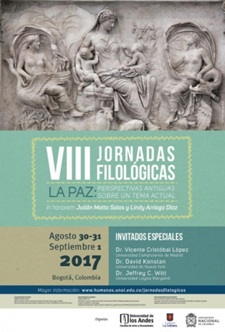 Jacques A. Bromberg
Jacques A. Bromberg
August, 2017
VIII Jornadas Filológicas. La paz: perspectivas antiguas sobre un tema actual
Bogotá, ColombiaReception Studies | Conference Presentation
My paper examined the history and rhetoric of the ancient “Olympic truce” (ekecheiria), which aimed at ensuring safe passage for athletes and spectators to and from the festival of Zeus at Olympia. Conceived on the bloody battlefields of the Peloponnesian War, the myth of the ekecheiria became a focal point for sophists, orators, and intellectuals such as Gorgias, Lysias, Isocrates, Plato, the comedian Aristophanes, and others, who hoped to bring about a lasting peaceful coexistence among Greeks. Despite their endorsement of Olympic aetiologies that emphasized the ekecheiria, however, we know surprisingly little about the truce itself, how it was administered, who was and was not subject to its terms, and who was ultimately responsible for any violations. Nevertheless, the idea of the ancient “Olympic truce” remains foundational to the philosophy of the modern Olympic movement, from where it has spread to nearly every corner of the modern sporting world. The first half of my paper collected evidence (literary, historiographical, archaeological, and epigraphic) for the Olympic ekecheiria, its origins and its functioning throughout antiquity. I focused especially on the special role of the ekecheiria in sophistic and philosophical visions of Panhellenism, and on the analogy of the Olympic festival as a model of Panhellenic peace. The second half of the paper examined the appropriation by Baron Pierre de Coubertin, and by the modern Olympic movement, of ancient myths and rhetoric about the ekecheiria to promote a vision of world peace through Olympism. Do Coubertin’s philosophical and ideological borrowings from antiquity offer a roadmap toward “a better and more peaceful world”, as he imagined or, in the words of George Orwell, is international sport simply “war minus the shooting”?
- Student Presentations from Sicily in 360°
 Jacques A. Bromberg
Jacques A. Bromberg
Alexandra Cologer, Jonathan Dyer, Sophie Elvin, Reid Frye, Emily Hrynko, Gabrielle Kosobucki, Emma Lange, Tianke Li, Darien Pepple, Elise Pura, Sarah Schilpp, Joy Shon, Natalie Siracusa, Stephen Susa, Sophie Tannenbaum
May, 2017Art and Archaeology | Project
As part of their presentations in Greek Archaeology (CLASS 1610), this year's Pitt in Sicily students created 360° videos at sites around the island. You can view the videos on YouTube by searching "Pitt in Sicily", or simply clicking here.
- Noh and Greek Tragedy
 Mae J. Smethurst †
Mae J. Smethurst †
March, 2017
Journal of the Institute of Nogaku Studies 41: pp. 240-230Greek Language and Literature, Reception Studies | Journal Article
A great distance―spatial, temporal, and cultural―stretches between fifth - century BCE Greece and the fourteenth/fifteenth-century CE Japan, when the best-known writers of tragedy(Aeschylus, Sophocles, and Euripides)and of noh(Kan’ami, Zeami, and Zenchiku)created their classic dramas. Since there is no evidence of any influence of one theatrical form upon the other until our times, a comparison of them is perforce ahistorical. The political and cultural milieus of the two forms of drama differed greatly. For example, Greek tragedy was a public affair, open to the citizens and thus democratic. In noh the performances were put on for an audience of the elite until a later period. The languages differ―the Greek verb is equipped with three persons and three numbers, the noun with five cases, and so forth. Therefore, it is never unclear, unless deliberately made so, who is talking at any given time in epic, lyric, or drama. Whereas in Japanese ambiguity in the identity of the speaker arises easily in a language that is not highly inflected.
And yet, somehow and somewhere the cultures shared elements in common, enough to nurture these two similar types of creative activity. It does not seem irrelevant that once the theaters had become established, governmental authorities exiled both Aeschylus and Zeami, and Euripides and Zenchiku went into self-imposed exile. If nothing else, this similarity in itself makes a cogent statement about the fragility of success in both cultures, not only in artistic endeavors but also in political endeavors, a fragility that is all too apparent in their drama.
- Japanese Adaptations of Greek Tragedy
 Mae J. Smethurst †
Mae J. Smethurst †
March, 2017
Re-imagining the Greeks: Contemporary and Cross-cultural Approaches to Greek Tragedy
Amherst CollegeReception Studies | Public Lecture
Prof. Smethurst spoke about the history of performances of Greek tragedy in Japan with a focus on the productions of “Trojan Women” and “Medea” by Suzuki Tadashi, Ninagawa Yukio, and Miyagi Satoshi.
- Proclus of Athens: A Life
 Christian Wildberg
Christian Wildberg
February, 2017
All From One: A Guide to Proclus
Oxford University PressAncient History and Society, Ancient Philosophy and Science | Book Chapter
This first chapter provides a suitable introduction to the volume by drawing a vivid picture of Proclus’ life: his provenance, his education, and his direction of the fifth-century school of Athens. Rather than rehearsing the well-known ‘facts’ of Proclus’ life, the author revises the received portrait of the philosopher by drawing attention to little noted patterns and details in Proclus’ biography. Behind the rhetoric of Marinus’ Life of Proclus, he discovers the portrait of a complex and intriguing human figure: the greatest philosopher of the fifth century and convinced advocate of pagan culture turns out to be a man with startling pretensions and lofty ambitions. By thus depicting the life at the fifth-century school of Athens, the author also sheds light on the practice of pagan culture in the fifth century by some of the leading intellectuals of the time.
2016
- The Growth of Venus
A. J. Korzeniewski
November, 2016Latin Language and Literature | Conference Presentation
- Dr. Korzeniewski's talk discussed the maturation of Venus in the Aeneid and her coming to accept Aeneas’ fated destiny. The full conference program may be found here.
- 5th International Kraków Study of Religions Symposium: Dr. Korzeniewski's talk discussed the maturation of Venus in the Aeneid and her coming to accept Aeneas’ fated destiny. The full conference program may be found here.
- Homer, Odyssey 10.200: Man-eating or Man-slaying?
 Edwin D. Floyd
Edwin D. Floyd
March, 2016
International Linguistic Association
Hofstra UniversityGreek Language and Literature | Conference Presentation
- Poetry Underpinning Power, Virgil's Aeneid: The Epic for Emperor Augustus
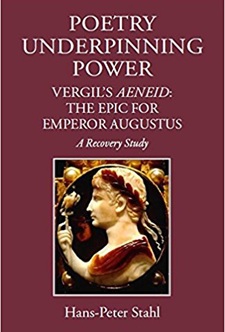 Hans-Peter Stahl
Hans-Peter Stahl
March, 2016
The Classical Press of WalesLatin Language and Literature | Book
In recent decades, international research on Virgil has been marked, if not dominated, by the ideas of the 'Harvard school' and similar trends, according to which the poet was engaged in an elaborate work of subtle subversion, directed against the new ruler of the Roman world, Octavian-Augustus. Much of Virgil's oeuvre consists prima facie of eulogy of the ruler, and of emphatic prediction of his enduring success: this is explained by numerous modern critics as generic convention, or as studied ambiguity, or as irony. This paradoxical position, which runs against ancient - as well as much modern - interpretation of the poet, continues to create widespread unease. Stahl's new monograph is the most thorough study so far to question modern Virgilian criticism on philological grounds. He bases himself on the internal logic and rhetoric of the Aeneid, and considers also political, historical, archaeological and philosophical subjects addressed by the poem. He finds that the poet has so presented the morality of his central figure, Augustus' supposed ancestor Aeneas, and of those who (eventually) clash with him, Turnus and Dido, as to make it certain that Roman readers and hearers of the poem were meant to conclude in Aeneas' favour. Virgil's intention emerges from Stahl's thorough, ingenious and original argumentation as decisively pro-Augustan. Stahl's work, in short, will not only enliven debate on current critical hypotheses but for many will enduringly affect their credibility.
- Encounters with Death: Was there Dark Tourism in Classical Greece?
 Carrie L. Sulosky Weaver
Carrie L. Sulosky Weaver
January, 2016
Journal of Greek ArchaeologyArt and Archaeology | Journal Article
‘Dark tourism’ is generally defined as travel to sites associated with suffering, death, or the macabre. In the modern world, popular dark tourism destinations include bloody battlefields such as Gallipoli and Waterloo, sites of disaster like Chernobyl and the World Trade Center, and scenes of genocide including the Holocaust concentration camps and the killing fields of Rwanda. Although some scholars in the burgeoning field of dark tourism studies maintain that travel of this sort is a phenomenon of the late 20th and early 21st centuries, humans have long been drawn to places of death and disaster, and dark tourism arguably has its roots in antiquity. To determine whether dark tourism was indeed an ancient custom, this article explores the evidence for the practice in the ancient Greek world during the 5th century BC. It begins with an introduction to dark tourism and ancient travel, then focuses on examples of two markedly different types of sites, burial grounds and nekuomanteia, ultimately establishing precedents for a premodern precursor of dark tourism and providing a framework for future studies of ‘dark’ travels in the ancient Mediterranean world.
- Neoplatonism
 Christian Wildberg
Christian Wildberg
January, 2016
Stanford Encyclopedia of PhilosophyAncient Philosophy and Science | Scholarship
The term “Neoplatonism” refers to a philosophical school of thought that first emerged and flourished in the Greco-Roman world of late antiquity, roughly from the time of the Roman Imperial Crisis to the Arab conquest, i.e., the middle of the 3rd to the middle of the 7th century. In consequence of the demise of ancient materialist or corporealist thought such as Epicureanism and Stoicism, Neoplatonism became the dominant philosophical ideology of the period, offering a comprehensive understanding of the universe and the individual human being’s place in it. However, in contrast to labels such as “Stoic”, “Peripatetic” or “Platonic”, the designation “Neoplatonic” is of modern coinage and to some extent a misnomer. Late antique philosophers now counted among “the Neoplatonists” did not think of themselves as engaged in some sort of effort specifically to revive the spirit and the letter of Plato’s dialogues. To be sure, they did call themselves “Platonists” and held Plato’s views, which they understood as a positive system of philosophical doctrine, in higher esteem than the tenets of the pre-Socratics, Aristotle, or any other subsequent thinker. However, and more importantly, their signature project is more accurately described as a grand synthesis of an intellectual heritage that was by then exceedingly rich and profound. In effect, they absorbed, appropriated, and creatively harmonized almost the entire Hellenic tradition of philosophy, religion, and even literature—with the exceptions of Epicureanism, which they roundly rejected, and the thoroughgoing corporealism of the Stoics. The result of this effort was a grandiose and powerfully persuasive system of thought that reflected upon a millennium of intellectual culture and brought the scientific and moral theories of Plato, Aristotle, and the ethics of the Stoics into fruitful dialogue with literature, myth, and religious practice. In virtue of their inherent respect for the writings of many of their predecessors, the Neoplatonists together offered a kind of meta-discourse and reflection on the sum-total of ideas produced over centuries of sustained inquiry into the human condition.
2015
- Invoking and Suppressing the Dead
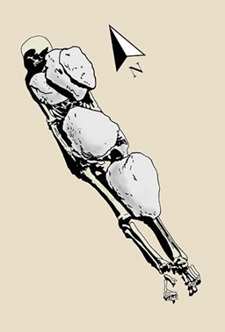 Carrie L. Sulosky Weaver
Carrie L. Sulosky Weaver
October, 2015
The University of Virginia MagazineArt and Archaeology | Journal Article
Virginia Magazine turned to U.Va. academics from six disciplines and asked them how each of their respective fields interprets the supernatural—spirits, visions, the undead and more: Archaeologists generally agree that the ancient Greeks believed in things that we now consider supernatural. U.Va. alumna and archaeologist Carrie Sulosky Weaver, who conducts research in southeastern Sicily, made a rare discovery of ancient tombs that showed a fear of the undead.
- The Bioarchaeology of Classical Kamarina: Life and Death in Greek Sicily
 Carrie L. Sulosky Weaver
Carrie L. Sulosky Weaver
September, 2015
Gainesville, FL: University Press of FloridaArt and Archaeology | Book
Sicily was among one of the first areas settled during the Greek colonization movement, making its cemeteries a popular area of study for scholars of the classical world. Yet these studies have often considered human remains and burial customs separately. In this seminal work, Carrie Sulosky Weaver synthesizes skeletal, material, and ritual data to reconstruct the burial customs, demographic trends, state of health, and ancestry of Kamarina, a city-state in Sicily.
Using evidence from 258 recovered graves from the Passo Marinaro necropolis, Sulosky Weaver suggests that Kamarineans—whose cultural practices were an amalgamation of both Greek and indigenous customs—were closely linked to their counterparts in neighboring Greek cities. The orientations of the graves, positions of the bodies, and the types of items buried with the dead—including Greek pottery—demonstrate that Kamarineans were full participants in the mortuary traditions of Sicilian Greeks. Likewise, cranial traits resemble those found among other Sicilian Greeks. Interestingly, evidence of cranial surgery, magic, and necrophobic activities also appeared in Passo Marinaro graves—another example of how Greek culture influenced the city.
An overabundance of young adult skeletal remains, combined with the presence of cranial trauma and a variety of pathological conditions, indicates the Kamarineans may have been exposed to one or more disruptive events, such as prolonged wars and epidemic outbreaks. Despite the tumultuous nature of the times, the resulting portrait reveals that Kamarina was a place where individuals of diverse ethnicities and ancestries were united in life and death by shared culture and funerary practices.
“A true, balanced bioarchaeological work of scholarship elucidating the way of life and death for the people of Passo Marinaro.”—Sherry C. Fox, coeditor of New Directions in the Skeletal Biology of Greece
“This excellent study—comprehensive in its research, sophisticated in its theory, meticulous in its analysis, lucid in its presentation—sets a new standard in the young, exciting field of the bioarchaeology of the early Greek world.”—Joseph L. Rife, author of Isthmia IX: The Roman and Byzantine Graves and Human Remains
“Sulosky Weaver eloquently weaves Greek myth and historical accounts of Greek life into her scientific analysis of the bioarchaeological evidence, providing a synthetic account of life at the Greek colony of Kamarina.”— Britney Kyle McIlvaine, University of Northern Colorado- Walking Dead and Vengeful Spirits
 Carrie L. Sulosky Weaver
Carrie L. Sulosky Weaver
June, 2015
Popular ArchaeologyArt and Archaeology | Journal Article
For the ancient Greeks, the dead were subjects of both fear and supplication. Necrophobia, or the fear of the dead, is a concept that has been present in Greek culture since the Neolithic period. At the heart of this phobia is the belief that corpses are able to reanimate and exist in a state that is neither living nor dead, but rather ‘undead.’ These liminal figures are deemed to be dangerous because it is understood that they leave their graves at night for the explicit purpose of harming the living. As a means of protection, the alleged undead were pinned in their graves or ritually ‘killed.’ Paradoxically, the Greeks also practiced necromancy, the purposeful invocation of the dead. The dead were typically entreated by means of binding spells inscribed on thin sheets of lead. These spells, called katadesmoi, were deposited in graves during nighttime ceremonies. Often petitioners sought to redress a wrong that had been committed, such as avenging a murder or returning a stolen inheritance, but katadesmoi were also used to gain an advantage in love or business. This article presents archaeological evidence of necrophobia and necromancy dating to the 5th through 3rd centuries BCE from the Greek site of Kamarina in southeastern Sicily. Details of the burial contexts will be given, possible explanations examined and parallel cases discussed, ultimately placing these macabre customs within the wider framework of Greek mortuary practices.
- Not just for the birds: augury and archaic attic vase paintings
 Sophia Taborski
Sophia Taborski
April, 2015
Undergraduate B. Phil. Thesis
University of Pittsburgh, April 2015Art and Archaeology | Scholarship
With the exception of extispicy scenes catalogued by Francois Lissarrague and snake-eagle omens discussed by Diana Rodríguez Pérez, divination has been ignored by vase-painting scholars and of ancient religion scholars, only Michael Flower has touched on visual sources.
Despite this lack of attention by current scholars, acts of divination and birds that I argue ought to be interpreted as omens appeared on hundreds of black figure Attic vases in the sixth century. Most of these bird omens were painted behind men on horseback. Henri Metzger examined a subset of this group, the funerary Rider Amphorae, and concluded that the riders were cavalry and the eagle an attribute of Zeus, the patron god of the cavalry. The riders’ armor suggests that horsemen were hoplites and because of the prominence of augury in everyday life, the birds are best identified as ambiguous omens. These bird omens add a future temporal dimension and emphasize the uncertainties of battle. By doing so, the Rider Amphorae highlighted the virtues of the horsemen and eulogized them at the tomb. Other vases with men on horseback were used in the symposium where the moment of the journey provided a common experience which fostered bonding among the symposiasts. The moment of a man embarking journey joined by a bird omen corresponds to Babylonian omens, the British Museum tablet 108874 and the Summa Alu, and may be explained as an example of a wider Mediterranean understanding of divination. Examining augury and bird portents in Attic vases provides insight into both the layman understanding of augury and the vase painter construction of narrative.- I Dreamed a Dream: The Psychology Behind Aeneid ii.268-297 and vii.404-474
A. J. Korzeniewski
April, 2015Latin Language and Literature | Conference Presentation
Classical Association of the UK Annual Conference
Bristol, UK
2014
- The Will and its Freedom: Epictetus and Simplicius on what is up to us
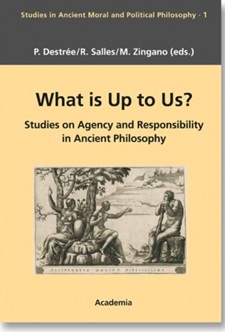 Christian Wildberg
Christian Wildberg
December, 2014
What is up to us? Studies on Agency and Responsibility in Ancient Philosophy (P. Destrée, R. Salles, M. Zingano, eds.)
Sankt Augustin, Academia Verlag, 2014Ancient Philosophy and Science | Book Chapter
The problem of responsibility in moral philosophy has been lively debated in the last decades, especially since the publication of Harry Frankfurt's seminal paper, "Alternate possibilities and moral responsibility" (1969). Compatibilists - also known as "soft" determinists - and, on the other side, incompatibilists - libertarians and "hard" determinists - are the main contenders in this major academic controversy. The debate goes back to Antiquity. After Aristotle, compatibilists, and especially the Stoics, debated this issue with the incompatibilists, notably Epicurus (though his classification as an incompatibilist has been disputed in modern scholarship), Alexander of Aphrodisias and Plutarch.
The problem debated at that time and the problem debated nowadays are fundamentally the same, even though the terms and the concepts evolved over the centuries. In Antiquity, the central notion was that of "what is up to us", or "what depends on us". The present volume brings together twenty contributions devoted to examining the problem of moral responsibility as it arises in Antiquity in direct connection with the concept of what is up to us - τὸ εφ' ῆμιν, in Greek, or in nostra potestate and in nobis, in its Latin counterparts, aiming to promote classical scholarship, and to shed some light on the contemporary issues as well.
- Interview with Miyagi Satoshi
 Mae J. Smethurst †
Mae J. Smethurst †
October, 2014
Proceedings of the Modern Language Association (PMLA) 129.4: 843-846Greek Language and Literature, Reception Studies | Scholarship
- Serpentine Constructions: Lucretius, de rerum natura
 D. Mark Possanza
D. Mark Possanza
May, 2014
Classical QuarterlyLatin Language and Literature | Journal Article
- Near Death Experiences: Greek Art and Archaeology Beyond the Grave

Carrie L. Sulosky Weaver
T.J. Smith
January, 2014
From Abortion to Pederasty: Addressing Difficult Topics in the Classics ClassroomArt and Archaeology | Book Chapter
Death can be an uncomfortable subject. Yet, much of what we know about ancient societies comes from funerary contexts, making discussions of death in the classroom unavoidable. Indeed elements of religion and the supernatural (itself a difficult topic), the funeral, and the afterlife are fundamental to all branches of Classical studies. When the subject is approached through a lens of mythology, or as a topic of philosophical debate, discourse is often dispassionate and detached. Moreover, when the subject of death is combined with tangible visual evidence, the anxiety quotient escalates. When faced with disturbing scenes, such as the prothesis on a Greek vase, where mourners surround a corpse, tear at their dishevelled hair and lacerate their cheeks, or whenever one must confront the meaning of a macabre image, like the photographs from Lefkandi that feature the skeletal remains of a bound woman, likely sacrificed to be buried with a man who was probably her husband, an obvious and predictable discomfort fills the classroom. Such visual and material expressions of death and the dead force us to ponder our own mortality. In this chapter we present a multi-faceted method for teaching death in the classroom, beginning with contextualization. Separated by time and culture, modern people do not experience death in the same manner as the ancient Greeks. When students are equipped with a better understanding of the ancient Greek culture of death, it is hoped that they will gain objectivity and the ability to separate classroom material from personal events. Thus, in the first and second parts of this chapter, we hope to educate teachers and provide, as a reference, a sampling of the visual and material evidence for death that is most relevant and most frequently encountered in the Classics classroom. The first part presents depictions of corpses and funerals in Greek art, and how ‘made to order’ objects commemorate and memorialize the dead, while the second part explains why we excavate and study graves. Shifting the focus to the classroom, the third part suggests techniques for facilitating an open discussion of death meant. To cope with negative emotional responses, a series of student writing assignments are offered, such as journaling, wiki participation, and responding to writing prompts. Also, a framework for a classroom debate on the ethics of displaying human remains in museums is provided. The intention of this final exercise is to encourage students to think critically about both sides of a controversial issue and understand how material remains from the past can inform the present.
- Probable Atretic Cephalocele in an Adult Female from Punta Secca (Sicily, Italy)
 Carrie L. Sulosky Weaver
Carrie L. Sulosky Weaver
R.J.A Wilson
January, 2014
International Journal of Osteoarchaeology
John Wiley & Sons, Ltd.Art and Archaeology | Journal Article
Excavations at Punta Secca, Sicily (Italy), in 2008 uncovered a substantially built tomb of ca ad 625/630 inside a private house and accompanying evidence for libations and funerary feasting in honour of the deceased. Inside the tomb were the skeletal remains of an adult female aged approximately 20/25 years and a child aged approximately 3/5 years. DNA analysis showed the child to be female and the adult and child to have been consanguineous. Archaeological and epigraphic evidence demonstrates that they were Christians. The cranium of the adult female showed an enlargement of the central portion of the occipital bone and a circular depression that terminated in a bifurcated foramen (diameter 3.25 mm). The former is likely an instance of occipital bunning; the latter is the first attested example of atretic cephalocele from an archaeological context. Tombs do not normally occur in ancient houses, and the hypothesis is advanced that the individual may have suffered from medical side effects, such as seizures, which caused rejection of the adult female by the local Christian community but veneration of her by her family as a holy woman.
- Il banchetto funerario nella Sicilia della prima eta bizantina: nuove attestazioni da Kaukana
 Carrie L. Sulosky Weaver
Carrie L. Sulosky Weaver
R.J.A Wilson, J.W.Hayes
January, 2014
Sicilia AntiquaArt and Archaeology | Journal Article
